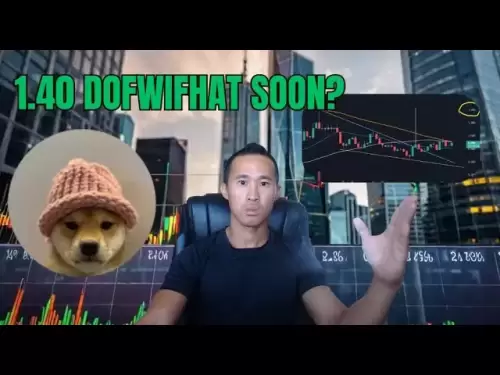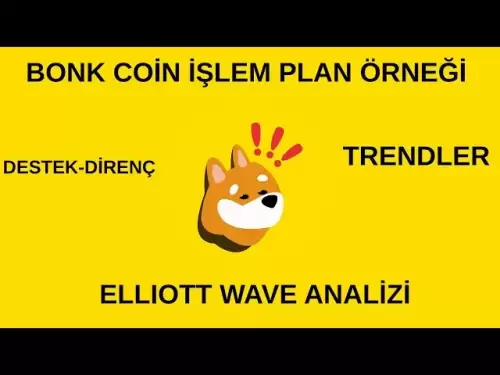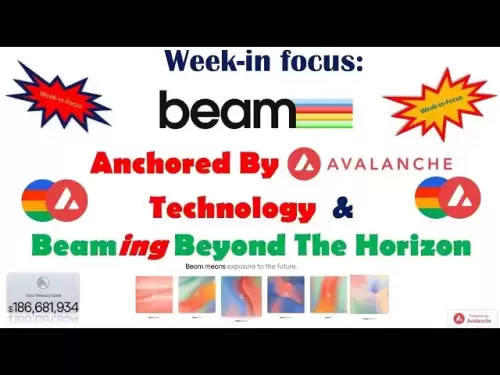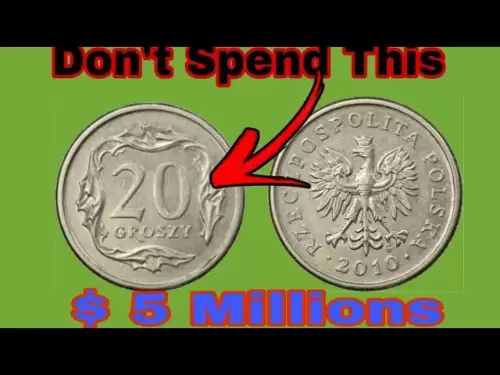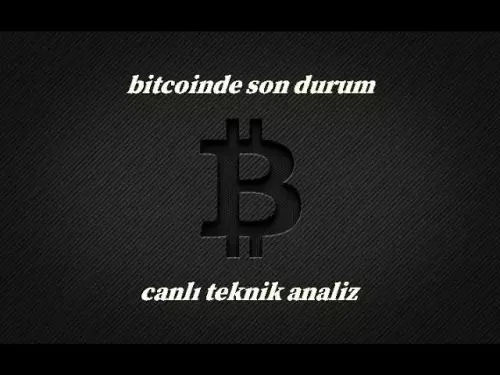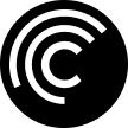-
 Bitcoin
Bitcoin $108,562.4295
0.46% -
 Ethereum
Ethereum $2,533.9553
1.52% -
 Tether USDt
Tether USDt $1.0002
-0.01% -
 XRP
XRP $2.2542
2.23% -
 BNB
BNB $662.4567
1.48% -
 Solana
Solana $151.4114
3.48% -
 USDC
USDC $0.9999
0.00% -
 TRON
TRON $0.2860
0.91% -
 Dogecoin
Dogecoin $0.1685
3.72% -
 Cardano
Cardano $0.5809
1.63% -
 Hyperliquid
Hyperliquid $39.2916
1.85% -
 Sui
Sui $2.8874
0.85% -
 Bitcoin Cash
Bitcoin Cash $496.5801
2.72% -
 Chainlink
Chainlink $13.3582
2.48% -
 UNUS SED LEO
UNUS SED LEO $9.0279
0.07% -
 Avalanche
Avalanche $18.0773
2.30% -
 Stellar
Stellar $0.2426
3.05% -
 Toncoin
Toncoin $2.9086
6.01% -
 Shiba Inu
Shiba Inu $0.0...01170
2.97% -
 Hedera
Hedera $0.1587
3.47% -
 Litecoin
Litecoin $87.4596
1.13% -
 Monero
Monero $317.0425
0.73% -
 Polkadot
Polkadot $3.3778
1.90% -
 Dai
Dai $0.9999
-0.01% -
 Ethena USDe
Ethena USDe $1.0001
-0.01% -
 Bitget Token
Bitget Token $4.4095
0.63% -
 Uniswap
Uniswap $7.3593
6.80% -
 Pepe
Pepe $0.0...09910
3.64% -
 Aave
Aave $274.7388
2.68% -
 Pi
Pi $0.4607
0.48%
What can the dForce (DF) coin be used for?
As a decentralized finance protocol suite, dForce seeks to establish a comprehensive financial ecosystem for digital assets through a range of services like lending, borrowing, and stablecoins.
Jan 01, 2025 at 11:49 am
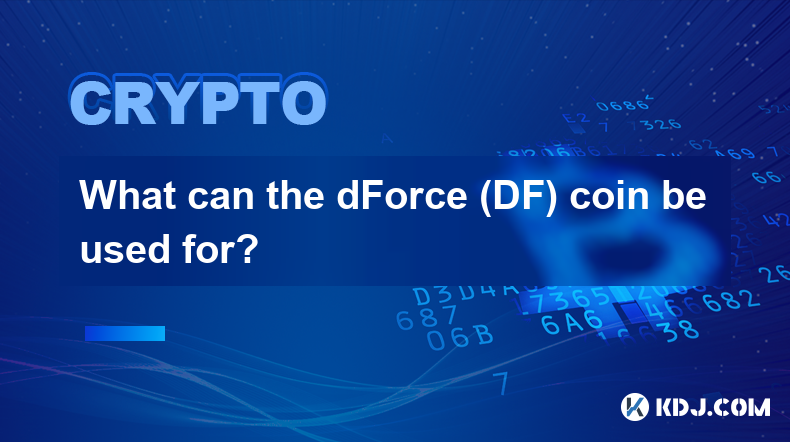
Key Points
- Understanding the dForce Platform and Ecosystem
- Exploring the Use Cases of dForce (DF) Token
- Tokenomics and Distribution of dForce
- Future Developments and Potential of dForce
What is dForce and Its Ecosystem?
dForce is a decentralized finance (DeFi) protocol suite that seeks to establish a comprehensive financial ecosystem for digital assets. The platform offers a range of financial services, including lending, borrowing, stablecoins, asset management, and trading. Through a network of dApps, dForce aims to provide users with a comprehensive suite of financial tools for managing and transacting digital assets.
Use Cases of dForce (DF) Token
The dForce token (DF) plays a crucial role within the dForce ecosystem, serving various functionalities:
- Governance: DF holders can participate in the governance of the dForce protocol by voting on key decisions related to the platform's development and operations.
- Staking: DF can be staked to earn rewards and support the security of the protocol. Staking contributions contribute to the stability and decentralization of the dForce network.
- Fee Payments: DF is used to pay transaction fees across the various services offered within the dForce ecosystem, such as lending, borrowing, and trading.
- Collateral: DF can be used as collateral for loans on the dForce lending platform. This enables users to borrow other digital assets while leveraging their DF holdings.
- Rewards: DF token holders can receive rewards for participating in the ecosystem, such as through liquidity provision and lending activities.
- Yield Generation: DF can be used to generate yield through yield farming strategies and staking. By participating in these activities, users can earn rewards in the form of additional DF or other cryptocurrencies.
- Liquidity Provision: DF can be used to provide liquidity on decentralized exchanges to earn trading fees.
Tokenomics and Token Distribution
The dForce token (DF) has a total supply of 1 billion tokens, distributed as follows:
- Public Sale: 400 million DF (40%)
- Foundation: 200 million DF (20%)
- Team: 200 million DF (20%)
- Ecosystem Fund: 100 million DF (10%)
- Reserve: 100 million DF (10%)
Future Developments and Potential of dForce
dForce continues to expand its ecosystem with new products and services. Key areas of focus include:
- Cross-Chain Integrations: Expanding dForce's reach to multiple blockchains to offer interoperability and wider access to digital assets.
- EVM Compatibility: Ensuring compatibility with the Ethereum Virtual Machine (EVM), which enables interoperability and facilitates building and deploying applications on dForce.
- Non-Fungible Token (NFT) Integration: Incorporating NFT capabilities into the dForce platform to provide users with the ability to manage, trade, and lend NFTs.
- Decentralized Autonomous Organization (DAO) Governance: Moving towards a more decentralized governance structure where DF holders collectively make decisions and guide the development of the dForce protocol.
FAQs:
Q: What is the main purpose of dForce?
A: dForce aims to provide a comprehensive financial ecosystem for digital assets through a suite of DeFi protocols.
Q: What are real use cases of the DF token?
A: The DF token is used for governance, staking, fee payments, collateral for loans, and to generate yield through staking and liquidity provision.
Q: How is the DF token distributed?
A: The DF token is distributed as follows: Public Sale (40%), Foundation (20%), Team (20%), Ecosystem Fund (10%), and Reserve (10%).
Q: What are the plans for the future development of dForce?
A: Future developments include expanding cross-chain compatibility, enhancing EVM interoperability, integrating NFT functionalities, and transitioning to DAO governance.
Disclaimer:info@kdj.com
The information provided is not trading advice. kdj.com does not assume any responsibility for any investments made based on the information provided in this article. Cryptocurrencies are highly volatile and it is highly recommended that you invest with caution after thorough research!
If you believe that the content used on this website infringes your copyright, please contact us immediately (info@kdj.com) and we will delete it promptly.
- Coin-Flipping Chaos: A Look at Pokémon TCG's Luckiest (and Riskiest) Cards & Deck Ranking
- 2025-07-07 05:10:12
- Crypto Coins, DEXTools, and the Trending Triumvirate: Jupiter, Kamino, and Wormhole
- 2025-07-07 05:10:13
- Ethereum's Evolution: Gas Limits, Vitalik Buterin, and the Institutional Embrace
- 2025-07-07 05:30:12
- Pepe Coin vs. LILPEPE: Price Predictions and the Future of Meme Coins
- 2025-07-07 05:35:13
- Litecoin, HBAR, and Altcoins: Navigating the Crypto Landscape in 2025
- 2025-07-07 04:30:13
- CZ, TON, and the UAE Golden Visa: Is It Too Good to Be True?
- 2025-07-07 05:40:12
Related knowledge

How to customize USDT TRC20 mining fees? Flexible adjustment tutorial
Jun 13,2025 at 01:42am
Understanding USDT TRC20 Mining FeesMining fees on the TRON (TRC20) network are essential for processing transactions. Unlike Bitcoin or Ethereum, where miners directly validate transactions, TRON uses a delegated proof-of-stake (DPoS) mechanism. However, users still need to pay bandwidth and energy fees, which are collectively referred to as 'mining fe...

USDT TRC20 transaction is stuck? Solution summary
Jun 14,2025 at 11:15pm
Understanding USDT TRC20 TransactionsWhen users mention that a USDT TRC20 transaction is stuck, they typically refer to a situation where the transfer of Tether (USDT) on the TRON blockchain has not been confirmed for an extended period. This issue may arise due to various reasons such as network congestion, insufficient transaction fees, or wallet-rela...

How to cancel USDT TRC20 unconfirmed transactions? Operation guide
Jun 13,2025 at 11:01pm
Understanding USDT TRC20 Unconfirmed TransactionsWhen dealing with USDT TRC20 transactions, it’s crucial to understand what an unconfirmed transaction means. An unconfirmed transaction is one that has been broadcasted to the blockchain network but hasn’t yet been included in a block. This typically occurs due to low transaction fees or network congestio...

How to check USDT TRC20 balance? Introduction to multiple query methods
Jun 21,2025 at 02:42am
Understanding USDT TRC20 and Its ImportanceUSDT (Tether) is one of the most widely used stablecoins in the cryptocurrency market. It exists on multiple blockchain networks, including TRC20, which operates on the Tron (TRX) network. Checking your USDT TRC20 balance accurately is crucial for users who hold or transact with this asset. Whether you're sendi...

What to do if USDT TRC20 transfers are congested? Speed up trading skills
Jun 13,2025 at 09:56am
Understanding USDT TRC20 Transfer CongestionWhen transferring USDT TRC20, users may occasionally experience delays or congestion. This typically occurs due to network overload on the TRON blockchain, which hosts the TRC20 version of Tether. Unlike the ERC20 variant (which runs on Ethereum), TRC20 transactions are generally faster and cheaper, but during...

The relationship between USDT TRC20 and TRON chain: technical background analysis
Jun 12,2025 at 01:28pm
What is USDT TRC20?USDT TRC20 refers to the Tether (USDT) token issued on the TRON blockchain using the TRC-20 standard. Unlike the more commonly known ERC-20 version of USDT (which runs on Ethereum), the TRC-20 variant leverages the TRON network's infrastructure for faster and cheaper transactions. The emergence of this version came as part of Tether’s...

How to customize USDT TRC20 mining fees? Flexible adjustment tutorial
Jun 13,2025 at 01:42am
Understanding USDT TRC20 Mining FeesMining fees on the TRON (TRC20) network are essential for processing transactions. Unlike Bitcoin or Ethereum, where miners directly validate transactions, TRON uses a delegated proof-of-stake (DPoS) mechanism. However, users still need to pay bandwidth and energy fees, which are collectively referred to as 'mining fe...

USDT TRC20 transaction is stuck? Solution summary
Jun 14,2025 at 11:15pm
Understanding USDT TRC20 TransactionsWhen users mention that a USDT TRC20 transaction is stuck, they typically refer to a situation where the transfer of Tether (USDT) on the TRON blockchain has not been confirmed for an extended period. This issue may arise due to various reasons such as network congestion, insufficient transaction fees, or wallet-rela...

How to cancel USDT TRC20 unconfirmed transactions? Operation guide
Jun 13,2025 at 11:01pm
Understanding USDT TRC20 Unconfirmed TransactionsWhen dealing with USDT TRC20 transactions, it’s crucial to understand what an unconfirmed transaction means. An unconfirmed transaction is one that has been broadcasted to the blockchain network but hasn’t yet been included in a block. This typically occurs due to low transaction fees or network congestio...

How to check USDT TRC20 balance? Introduction to multiple query methods
Jun 21,2025 at 02:42am
Understanding USDT TRC20 and Its ImportanceUSDT (Tether) is one of the most widely used stablecoins in the cryptocurrency market. It exists on multiple blockchain networks, including TRC20, which operates on the Tron (TRX) network. Checking your USDT TRC20 balance accurately is crucial for users who hold or transact with this asset. Whether you're sendi...

What to do if USDT TRC20 transfers are congested? Speed up trading skills
Jun 13,2025 at 09:56am
Understanding USDT TRC20 Transfer CongestionWhen transferring USDT TRC20, users may occasionally experience delays or congestion. This typically occurs due to network overload on the TRON blockchain, which hosts the TRC20 version of Tether. Unlike the ERC20 variant (which runs on Ethereum), TRC20 transactions are generally faster and cheaper, but during...

The relationship between USDT TRC20 and TRON chain: technical background analysis
Jun 12,2025 at 01:28pm
What is USDT TRC20?USDT TRC20 refers to the Tether (USDT) token issued on the TRON blockchain using the TRC-20 standard. Unlike the more commonly known ERC-20 version of USDT (which runs on Ethereum), the TRC-20 variant leverages the TRON network's infrastructure for faster and cheaper transactions. The emergence of this version came as part of Tether’s...
See all articles





















